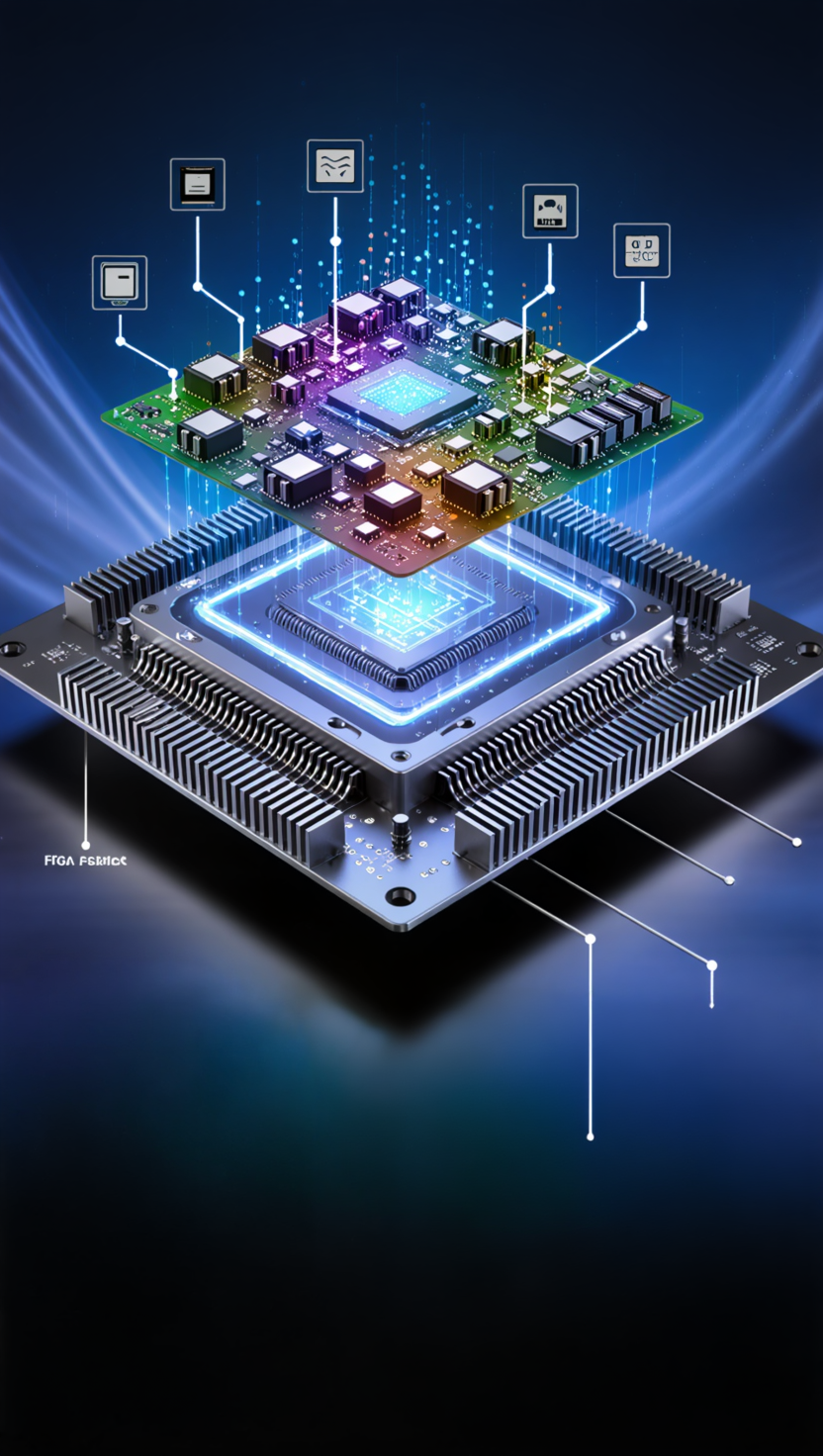Series: How to Choose an FPGA Chip - Part 2.1: Communications and 5G/6G — FPGAs in Next-Generation Networks
2025-09-28 11:02:10 1001
Part 2.1: Communications and 5G/6G — FPGAs in Next-Generation Networks
Communications infrastructure is one of the largest consumers of FPGA technology. As 5G networks mature and 6G research accelerates, FPGAs provide the flexibility to support evolving standards, high-speed interfaces, and complex signal processing. For engineers, the challenge is implementing baseband, transport, and optical functions with deterministic performance. For managers, the focus is on securing high-performance devices amid strong demand and supply constraints.
1. Baseband Signal Processing
- Engineer’s View: 5G baseband requires massive MIMO, beamforming, and channel coding. FPGAs with large DSP resources and high-speed SerDes are ideal for parallel signal processing. Low-latency deterministic behavior is critical.
• Manager’s View: Baseband FPGAs are high-end devices with ASP often >$1000. Supply chain risk is significant since they depend on advanced nodes (16 nm, 7 nm). Partnerships with FPGA vendors are necessary for long-term supply assurance.
2. OTN/Ethernet Acceleration
- Engineer’s View: Optical transport networks (OTN) and Ethernet (100G/400G/800G) rely on FPGA-based accelerators to handle packet processing, encryption, and error correction. High-speed SerDes and MAC/PCS IP cores are mandatory.
• Manager’s View: These devices target telecom and hyperscale data centers. While they carry high ASP, they enable system consolidation and long-term savings. Lead times can stretch >40 weeks during demand peaks.
• Examples: Xilinx Virtex UltraScale+, Intel Agilex.
3. Optical Module DSP
- Engineer’s View: Compact, low-power FPGAs are used in coherent optical modules (400G/800G) for digital signal processing. Power efficiency and small form factor are key.
• Manager’s View: Devices must balance performance with cost and size. Low-power families like Lattice CrossLink-NX may serve bridging roles, while high-end DSP FPGAs remain supply-constrained.
• Examples: Microchip PolarFire, Intel Stratix 10 TX.
Comparative Table: FPGA Use in Communications and 5G/6G
|
Application |
FPGA Requirements |
Example Families |
Engineer’s Priority |
Manager’s Concern |
|
Baseband Signal Processing |
High DSP count, low latency, SerDes 25G+ |
Xilinx Kintex UltraScale, Intel Agilex |
Beamforming, channel coding |
High ASP, supply assurance |
|
OTN/Ethernet Acceleration |
100G/400G/800G Ethernet, PCS/MAC IP, SerDes |
Xilinx Virtex UltraScale+, Intel Stratix 10 |
Packet throughput, encryption |
Long lead times, premium pricing |
|
Optical Module DSP |
Compact form factor, power efficiency |
Microchip PolarFire, Intel Stratix 10 TX |
DSP efficiency, low power |
Size/cost balance, lifecycle |
Case Studies
Case Study 1: 5G Massive MIMO Base Station
Challenge: A telecom OEM needed to implement 64T64R massive MIMO beamforming.
Solution: Intel Agilex FPGA with >2000 DSP slices and 58G SerDes.
Result: Achieved low-latency parallel processing for real-time beamforming.
Manager’s Perspective: ASP ~$1200, secured through strategic vendor agreements.
Case Study 2: 400G Ethernet Line Card
Challenge: A networking company needed to deploy 400G Ethernet with packet inspection and encryption.
Solution: AMD/Xilinx Virtex UltraScale+ with hardened 100G Ethernet MAC/PCS IP.
Result: Delivered line-rate throughput with integrated encryption engines.
Manager’s Perspective: ASP ~$1500, 36–40 week lead times during peak demand.
Case Study 3: Coherent Optical Module
Challenge: A module vendor required DSP for coherent optics within a compact, low-power form factor.
Solution: Microchip PolarFire FPGA (~5 W typical power).
Result: Enabled 400G coherent optical transmission with reduced energy use.
Manager’s Perspective: ASP ~$200, strong lifecycle support for telecom market.
Conclusion
FPGAs are indispensable in communications and 5G/6G networks, enabling baseband processing, Ethernet acceleration, and optical DSP. For engineers, they provide the flexibility to adapt to evolving standards. For managers, they represent a high-cost but essential investment, with supply and lifecycle considerations critical to deployment. The right FPGA choice ensures not just technical success, but also long-term business viability in a rapidly growing market.






